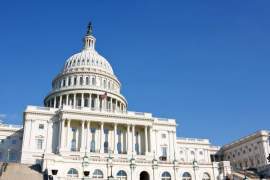
Understanding the 21st Amendment

Popular In Constitution
Purpose Of Lifetime Appointment And Pros And Cons Enumerated Powers Bicameral Legislature Background Article 3 Of The Constitution We The People 1st Amendment Who Wrote The Constitution Judicial Review Equal Protection Clause Three Fifths Compromise 5th Amendment 10th Amendment
The 21st Amendment is the only one introduced that would completely repeal another Amendment, the 18th Amendment. The Eighteenth Amendment implemented a national ban on alcoholic or "intoxicating" substances, which was commonly referred to as Prohibition. The 21st Amendment would call for the prohibition repeal, which would no longer prohibit the sale, manufacture, or transportation of alcoholic beverages. The 21st Amendment was ratified on December 5th, 1933 and was the only Amendment to be ratified by state ratifying conventions rather by state legislature, which would mark the prohibition repeal.
It is clear that the 21st Amendment was a result of the failed prohibition of alcohol in the United States. Though consumption generally declined, organized crime and crime rates soared to levels never experienced by Americans before. Prohibition only applied to the sale, manufacture, and transportation of alcoholic beverages, but not actual consumption. Even though this would make alcohol extremely difficult to obtain, there would be those that would find illegal means to get their hands on alcohol and ample opportunity existed to derive a profit from such practice.
Bootleggers, speakeasies, and the rise of organized crime all were birthed as a reaction to the 18th Amendment. Criminals, such as notorious Chicago gangster Al Capone, would become millionaires and a general lawlessness would proliferate in the United States. Many would simply ignore the provisions set forth by Prohibition. Corruption was common among law enforcement and drinking would become a symbol of rebelliousness, which heightened its appeal. It became apparent that Prohibition, though a noble attempt and experiment, generally brought on more negative impacts than any positive gains to be brought from reducing the consumption of alcohol.
The apparent need to reverse Prohibition became the general sentiment of the country. However, its overturning would prove to be more complicated because of the political power the Temperance Movement had garnered through lobbying. Congress would then have to employ one of two methods for ratifying Constitutional Amendments, which had never been used before. Normally, ratification by State legislature was the avenue taken for Amendment ratification, requiring the approval of three-fourths of the states.
The other method, as provided by the United States Constitution, is by State conventions. State conventions abide by a loose ratification process, which is similar to that of the "one-state, one-vote" national referendum. The 21sth Amendment would be the only Amendment to the United States Constitution to be ratified using this method.
The overturning of Prohibition would, therefore, delegate responsibility of regulating alcohol laws to the states. Even though the 21st Amendment was approved, several states continued to follow the doctrine of Prohibition. For example, Missouri would remain alcohol-free until 1966, while Kansas did not allow public bars until 1987. Some states go as far as allowing counties and/or municipalities to impose their own regulations regarding alcoholic beverages. The interpretation of the provisions in the second section of the 21st Amendment allowed for the states to maintain the right to control alcoholic beverages.


















